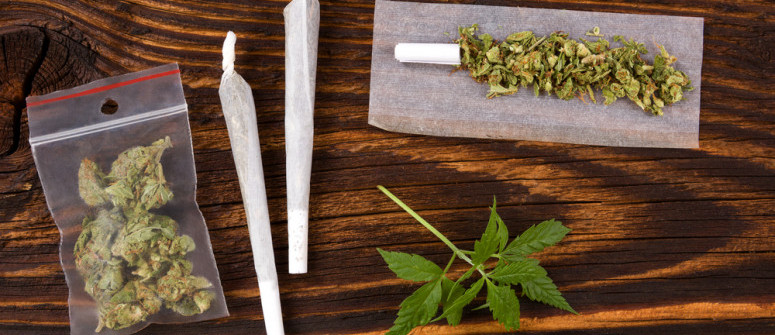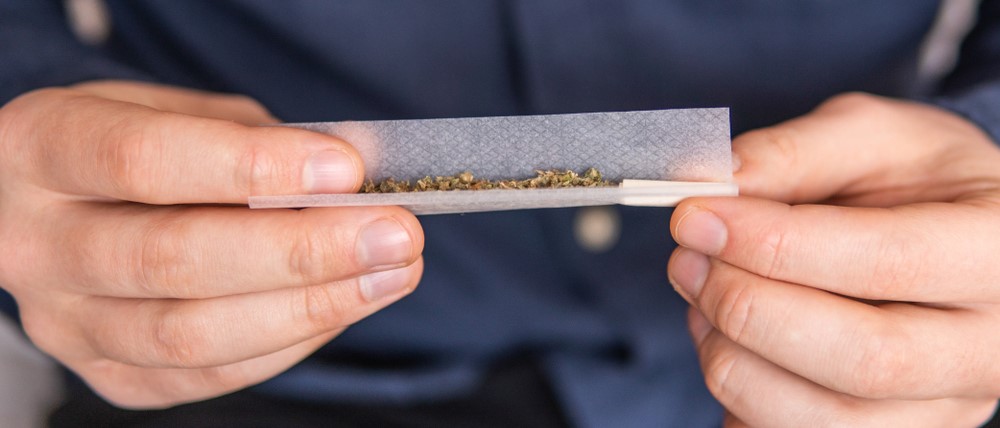The history of cannabis joints

Joints are arguably the most common and celebrated method of smoking cannabis. They've been around for centuries, with an unshakable place in pop culture as well. Where did it all start, though? From the first rolled cigarettes to the doobies we know and love today, there's a rich and vibrant history behind the humble joint.
More so than the pipe, one-hitter, or bong, the joint is synonymous with cannabis. "Puff, puff, pass" may be the most iconic weed-related saying out there; what do you think they're puffing and passing? A joint, of course. We shouldn't forget about blunts, either, but they only appeared in the 1980s, while joints have been around much longer. Let's take a moment to walk through their history, and discuss the details of what makes them what they are.
IT ALL STARTED WITH THE COLOURFUL WORLD OF ROLLING PAPERS
Before we can get into joints, we need to first look at where the concept of where rolling plant matter in paper and smoking it came from. Let's take things back to around the 1600s when the tobacco trade in Europe was blossoming. Spanish aristocrats would regularly smoke massive cigars, discarding the butts when they had enough. The peasants, wanting a taste for themselves, began collecting the butts, breaking them down, and re-rolling them using newspaper scraps. Thus, the first cigarette was born. From there, recognising the demand, papermakers in Alcoy, Spain, began producing clean, white rolling papers. Being a far more enjoyable alternative to newspapers, these rolling papers quickly gained popularity.
Nowadays, whether it's Zig Zag, RAW, OCB, or another brand, rolling papers come in all different types and sizes. Many companies have made longer, larger varieties to appeal to stoners. At the same time, though, the classic, shorter variety isn't uncommon by any means.
THE RISE OF THE JOINT
More than 200 years after rolling papers emerged, the joint was finally born. As with its ancestor, it all began with the working class. In the 1850s, while observing field workers in Mexico, a pharmacist at the University of Guadalajara noted they would roll up cannabis mixed with tobacco for their cigarettes. This means the first "recorded" joint was technically a spliff, but we'll discuss those details later.
A couple of decades later, America saw the first ever commercially sold joints: Grimault's Indian Cigarettes. They were advertised as a way to alleviate respiratory issues, being mixed with belladonna and potassium nitrate. Those ingredients, thankfully, didn't make it into the sort of joints that spread during the Prohibition era (1920–33). Rather than nausea relief, these joints were just for fun, becoming big among jazz musicians that wanted to catch a buzz without dealing with fuzz. It was made illegal shortly after alcohol prohibition ended, but this didn't kill it at all. As the 1960s came, it saw new popularity as a symbol of the counterculture and peaceful protest against the system. Some would argue it still represents those values today.
THE DIFFERENCE BETWEEN A JOINT AND A SPLIFF

Now that we've covered the history, you might be wondering why we differentiated between joints and spliffs earlier. For American readers (and some Europeans), the term "spliff" simply refers to a joint that contains both tobacco and marijuana. In the US, one with no tobacco in it will be referred to as a joint. For those in the West Indies where the term was born, as well as those in most European nations, "spliff" is merely another term for a joint, tobacco-blended or not. If you're trying to avoid tobacco, or are looking for it specifically, it'll be important to keep these distinctions in mind.
THE JOINT: THE CORNERSTONE OF MODERN CANNABIS
Being arguably the most popular and accessible smoking method, we'd be remiss not to celebrate the joint. From 19th-century workers rolling them in the fields to modern companies pre-rolling them to be bought in dispensaries, they've had a long journey to get to where they are today. While vaping has gained popularity recently, the price barrier is undeniable. Until companies can make safe vapes as cheaper (and even then), joints aren't going anywhere. That being said, the market can shift anywhere over the coming decades. Who knows what social and economic situations will arise? With that in mind, we can't truly predict what smoking methods will triumph or phase out.
If the uncertainty stresses you out, though, just spark up a joint and forget about it.
.jpg)
.jpg)

.jpg)
